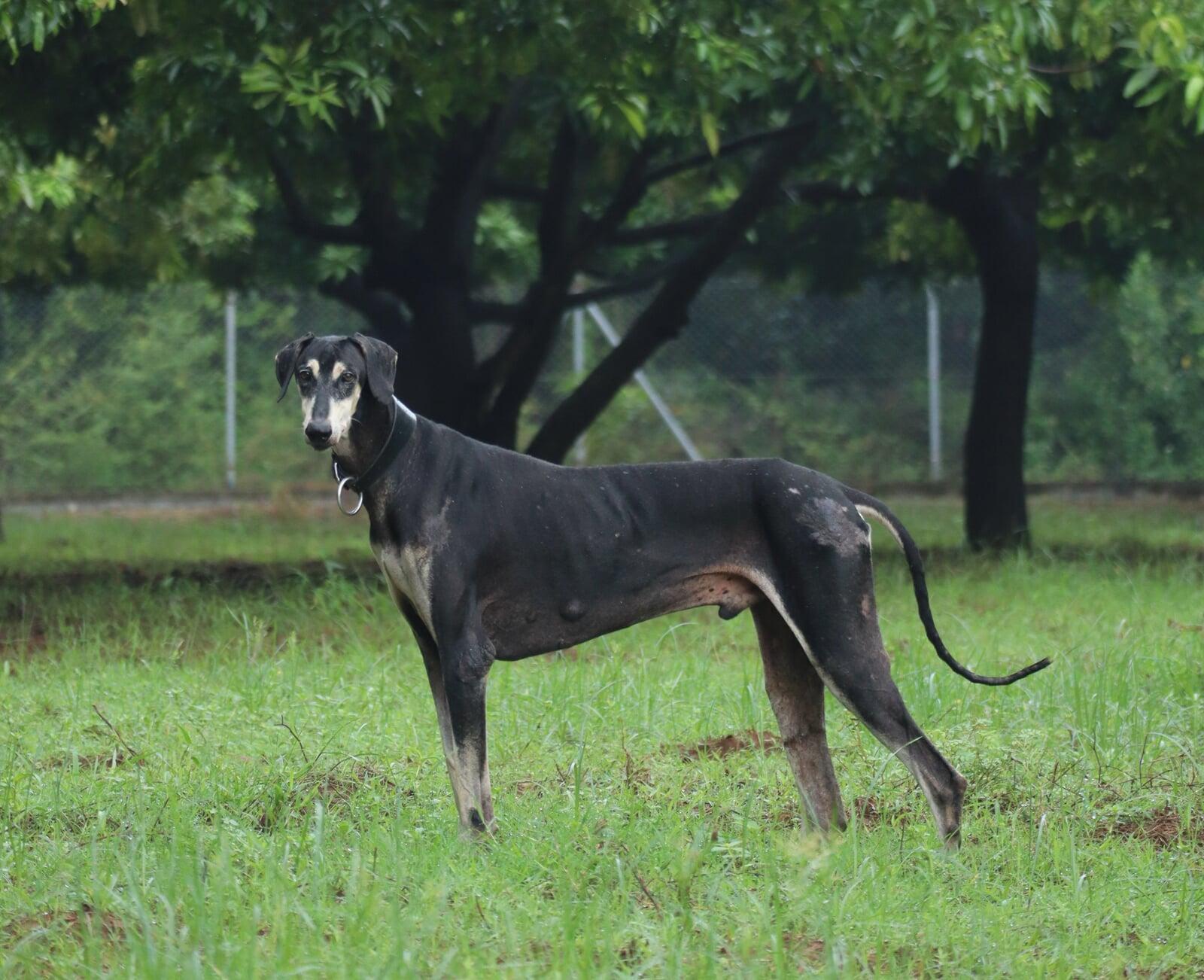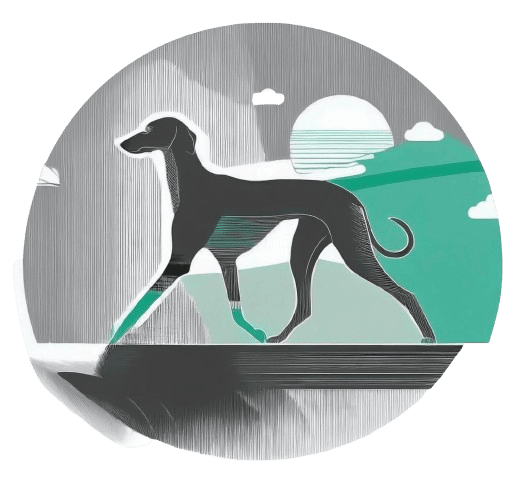
Photo of Ayyanar
Brief Historical Background
The Chippiparai originates from Tamil Nadu, particularly the southern regions like Tirunelveli, Thoothukudi, Virudhunagar, and Tenkasi. Though slight regional differences may occur due to local preferences, the breed's type remain generally uniform and easy to identify. This hound is primarily known for its exceptional speed and hunting abilities. Tough and low-maintenance, it has traditionally worked in challenging environments with minimal care.
General Appearance
This is a smooth-coated sighthound of Asiatic type, purposefully built for enduring long hunts in hot, rugged conditions. Slightly longer than tall, long-legged, the Chippiparai has a lean, well-muscled frame with good angulation. The breed projects a graceful yet powerful silhouette, reflecting strength, stamina, and poise. It should convey a refined yet robust appearance, avoiding exaggerated features.
Key Proportions
Ideally, the breed’s body length (measured from shoulder to buttock) is slightly greater than its height at the withers. Square-bodied specimens are not desirable.
Temperament
This breed is loyal and affectionate toward its family and other dogs but maintains a strong prey drive, making it prone to chasing smaller animals.
Origin: Tamil Nadu, India
Primary Use: Sight-based hunting
FCI Group: Group 10 – Sighthounds, Section 3 – Short-haired
KCI Group: Group 11 – Indian Breeds
Head
The head is moderately long and narrow, with moderate width between the ears, tapering toward the eyes and then again toward the muzzle.
Skull: Flat or slightly domed; the occipital bone is not pronounced.
Stop: Slightly visible; parallel planes preferred from point of nose tip to stop and stop to occiput—no convex or Roman nose.
Nose: Preferably large and black; pink or unpigmented noses are faults.
Muzzle: Straight and filled out beneath the eyes; may show a slight arch along the bridge.
Jaws and Teeth: Strong and long, scissor bite with full dentition.
Eyes: Ranging from dark to light hazel, they are round, large, and expressive, with dark rims.
Ears: Triangular with rounded tips, set above eye level, close to the head, and mobile. Drop ears, rose ears and prick ears are acceptable. Large ears are not typical.
Neck
Slightly longer than the head, clean and muscular, with a gentle arch, smoothly transitioning into the shoulders.
Body Structure
Topline: Level or gently rising toward the hips with a slight arch over the loin; at least three vertebrae should be visible.
Back: Moderate width; neither too slim nor overly broad.
Loin: Deep, wide, well-muscled, and slightly arched.
Hip Bones: Should align with or slightly exceed wither height.
Croup: Moderately long and somewhat steep.
Chest: Moderately narrow and deep enough to reach the elbows, offering space for heart and lung function.
Ribs: The first few are flatter, becoming more curved toward the rear. Not barrel-shaped. The last three ribs may be visible.
Underline: Well-defined drop at the chest transitioning into a tuck-up at the abdomen. Muscles should be tight and firm.
Tail
Set low and tapering to a fine point, often described as a "rat tail." It typically reaches just below the hock and curves naturally. When in motion, the tail may rise above the horizon. Thinness of the tail is a breed hallmark; thick or ringed tails are faults.
Limbs
Forequarters
Shoulders: Long, sloped, and muscular but not bulky.
Upper Arm: Similar in length to the shoulder blade, with a wider angle.
Forearms: Long and straight.
Pasterns: Slightly angled and of medium length.
Feet: Well-arched toes with thick pads. The middle toes are noticeably longer. Black nails are preferred.
Hindquarters
General: Wide across the rear, muscular yet supple.
Thighs: The lower thigh is longer than the upper.
Stifles: Moderately bent.
Hocks: Broad and slightly low-set.
Rear Pastern: Strong and dewclaw-free.
Feet: Similar to front feet; positioned close to a vertical line dropped from the buttocks.
Movement
The Chippiparai moves with ease and efficiency, showing a springy and elastic trot typical of the breed. Its gait is smooth and powerful, with effective ground coverage and excellent coordination—without excessive reach or hackney action.
Skin and Coat
Skin: Thin, tight, and fine across the body.
Coat: Very short and smooth, with a notable sheen. Sparse hair on the belly and chest is common.
Color
Acceptable colors include black and tan (also known as "Kanni"), various shades of fawn, red, white, black saddle and grey with grizzle. Small white markings, black masks and sable shadings are allowed in fawns and reds alone. Other colors are considered faults.
Size
Males: 66–76 cm (25–30 inches)
Females: 60–71 cm (23–28 inches)
Slight variations are acceptable.
Faults
Any trait that deviates from the above standards should be evaluated in terms of severity and its impact on the dog’s health and functionality. Examples include:
Heavily built body or limbs
Unbalanced outline
Pronounced stop
Roman nose
Hip bones noticeably lower than withers
Thick or Ring tail
Non-standard coloration
Disqualifications
Dogs showing obvious physical or behavioral abnormalities, or any of the following, should be disqualified:
Lack of breed type - especially signs of crossbreeding
Square or taller-than-long proportions
Non-conforming coats (e.g., long, rough, or feathered)
Disqualifying eye or nose colors (e.g., blue eyes, pink nose)
Lacking soundness - dogs that couldn't hunt small game.
Note
All male dogs must have two normally developed testicles fully descended into the scrotum. Only healthy, functionally sound dogs that adhere to the breed standard should be used for breeding.
Please ask permission prior to reproducing any and/or all of this document.

